Planning ahead and properly is critical to getting the most out of your investment. With budgeting and forecasting being the key elements in the success of a business, it is important to avoid common mistakes in choosing the right software so that you can take advantage of its full capabilities and improve forecasting and budgeting.
1. Choose a wrong decision-making team
When choosing the best budgeting and forecasting software for your enterprise, you want to invest in the right product. Unfortunately, faced with a big menu of options, most companies choose the wrong people for the job, who end up picking a product that does not meet your exact business needs.
In order to get your hands on the right product, you need to select the right decision-makers who can evaluate the software and determine whether it will work for your organization. The ideal budgeting, planning, and forecasting package is designed to align organizational goals across multiple departments.
This will ensure that everyone is engaged in the process to create clean data, which can be used for budgeting and forecasting. The software you require for your business should be capable of analyzing past business performance effectively. Analyzing past performance will help the system consider every aspect and forecast accordingly for the future ahead and meet the existing and future challenges.
2. Not examining the system
Most businesses fall for the sales gimmicks of some vendors and end up investing in a budgeting & forecasting system that does not support all of their processes. This amounts to a loss of time and money.
Before investing in a product, try to find what industries the software supports with holistic, end-to-end solutions attuned to performance indicators. Probe carefully to determine that the software has the required features to cater to your individual business needs. Try to find whether the product is capable of interacting with key accounting modules/applications, including human resources, and general ledger, among others.
Also, do not forget to test vendors as to how they will respond to inevitable changes in your industry. Changes are inevitable, but that does not mean your partner should close all doors on you when the need arises. Would you want to go for a pivotal partner that can’t embrace the changes? With the global marketplace constantly changing, and triggering changes in industries, being able to respond to them is one way to stay ahead of the curve.
3. Ignoring forecasting capabilities
One of the biggest budgeting and forecasting system mistakes made by a few companies is that they ignore the forecasting aspect of the software. A forecasting tool that only draws a picture of the future of a company if it does not make any major changes in its strategy isn’t the best investment you can make for planning purposes.
Contrarily, you want a sophisticated technique that will take information about your inventory, historical data, and existing sales figures to create forecasts for each department. The information you gain can be put to best use for marketing, planning, and streamlining your processes.
To start with, try to find the problems you’d like to solve with the new software and then determine whether the tool you are considering has the features to create solutions to solve those problems.
One of the biggest budgeting and forecasting system mistakes made by a few companies is that they ignore the forecasting aspect of the software.
4. Not considering integration issue
Imagine a scenario in which you purchase a budgeting and forecasting system only to find that it does not integrate with your existing systems! This is one of the major mistakes most businesses make when investing in a forecasting tool.
When it comes to purchasing a forecasting solution, make sure it is capable to involve multiple users for collaboration purposes and facilitate intra-software messaging and automated combinations of different budget submissions.
Collaboration is critical to any enterprise. With the right software, department managers and decision-makers will have the right information available always. The financial software you plan to invest in must synchronize existing systems and integrate with third-party software, while leaving no gaps. If you can’t use, export, import, validate, and warehouse data from supply chain partners or other units, the forecasting software would not give you an accurate picture of things.
5. Ignoring customization
A budgeting and forecasting solution must be flexible enough to cater to your growing business needs. Not only this, it is important that the product is customizable so that you can omit and add information as and when required.
Reports generated by financial software would be more effective if communicated in a more targeted way to department managers as well as other relevant workgroups. Customizing will help you streamline reports for each department, helping keep the most critical, actionable information on the top so that the top management can have a realistic look at the relevant numbers.
Wondering how to choose a budgeting & forecasting solution that meets your unique business needs? Well, at ITQlick, we can help. With proven experience in the IT industry, we can guide you through the software selection process and help you find the solution that best fits your unique requirements.
